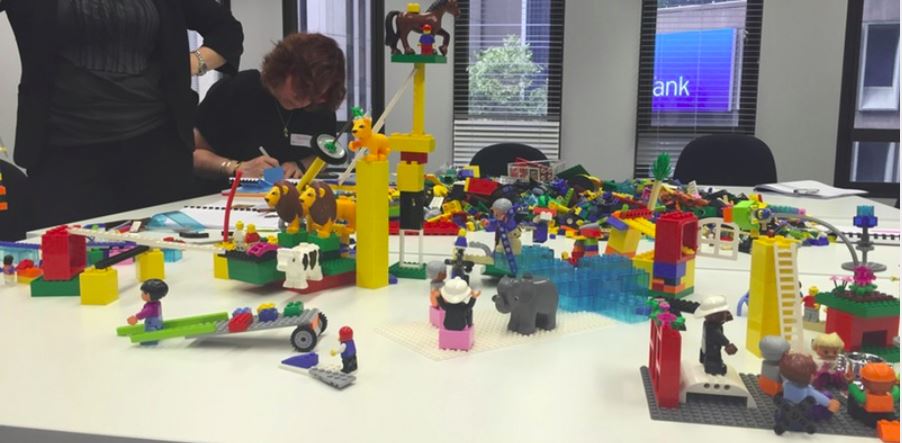HELLO!
When the new editors for the seriousplaypro.com site asked if I would assume responsibility for being the Design Thinking expert and curator of this special topic area, I immediately replied “YES!”. I spent a few decades as a Design Thinker before discovering LEGO® SERIOUS® PLAY® and love exploring how the two overlap and integrate. My hope is that this will become a place for us all to explore more, together. The purpose of this first post is to propose a few goals for this group and get the conversation started.
There are three simple objectives:
- To inspire and encourage a global community of LSP practitioners to evolve our discipline in collaborative and innovative ways.
- To foster shared understanding of the relationship between Design Thinking and LEGO® SERIOUS PLAY® methodology in both theory and practice.
- To have fun and engage in some Serious Play.
DESIGN THINKING
To get things started, I’d like to offer a provocation.
This is a space for sharing our experiences with Design Thinking and Lego Serious Play. We all know what LSP is and we probably share a pretty cohesive definition of the technique and its use. What we may not have, however, is a common understanding for what Design Thinking is and what it means to each of us. If I have learned anything in my many years of practicing, teaching and facilitating Design Thinking, it’s that everyone seems to have their own unique idea of what it is and how to do it. I have also learned that there is no one right answer.
So, let’s start at the very beginning.
Let’s build a shared understanding of Design Thinking.
My own definition (via LSP model) is below.

I spent years in academia studying the origins of Design Thinking, including it’s historical evolution and how it is similar and different from others ways of thinking. My all-time favorite definition of design comes from Herbert Simon, who published The Sciences of the Artificial in 1969 where he wrote,
“Everyone designs who devises courses of action aimed at changing existing situations into preferred ones”
Given this definition, we are ALL designers. All of us, at some point in time, have tried to figure out how to change an unappealing situation into a better one. As LSP facilitators, we do this all the time when we help our clients and participants change a current situation into a better one.
But that describes Design Doing, not Design Thinking. For me, Design Thinking is how we think about what we are doing when designing, why we do it and what tools we choose to apply. To this end, I believe Design Thinking is not necessarily a strict process or series of steps; rather it is a mindset and toolset that is first and foremost human-centered, not just user-centered. It should be inclusive of all stakeholders who may impact or influence a particular situation. The Design Thinking toolset includes ways to Empathize with humans, Frame problems and opportunities, and Generate ideas and solutions.
Do you have a similar way of describing Design Thinking? Do you have a completely different interpretation? I look forward to hearing (and SEEING) your definitions of Design Thinking so please share.
Let’s start this group with some Serious Play!







 Become a LEGO Serious Play facilitator - check one of the upcoming training events!
Become a LEGO Serious Play facilitator - check one of the upcoming training events!
Hi Tamara,
I like your interpretation of Design Thinking and especially your LEGO model. Can Design Thinking come under Groups so that those with a specific interest can join?
Karen
Hi Tamara,
I’ve been asked to facilitate a design thinking session with LSP (8 participants, approx. 4 hours duration). Could you advice me on what LSP set to use for this session? Would you just use only the Starter Kit (1 per person) or also the Identity and Landscape Kit?
Cheers,
Dennis